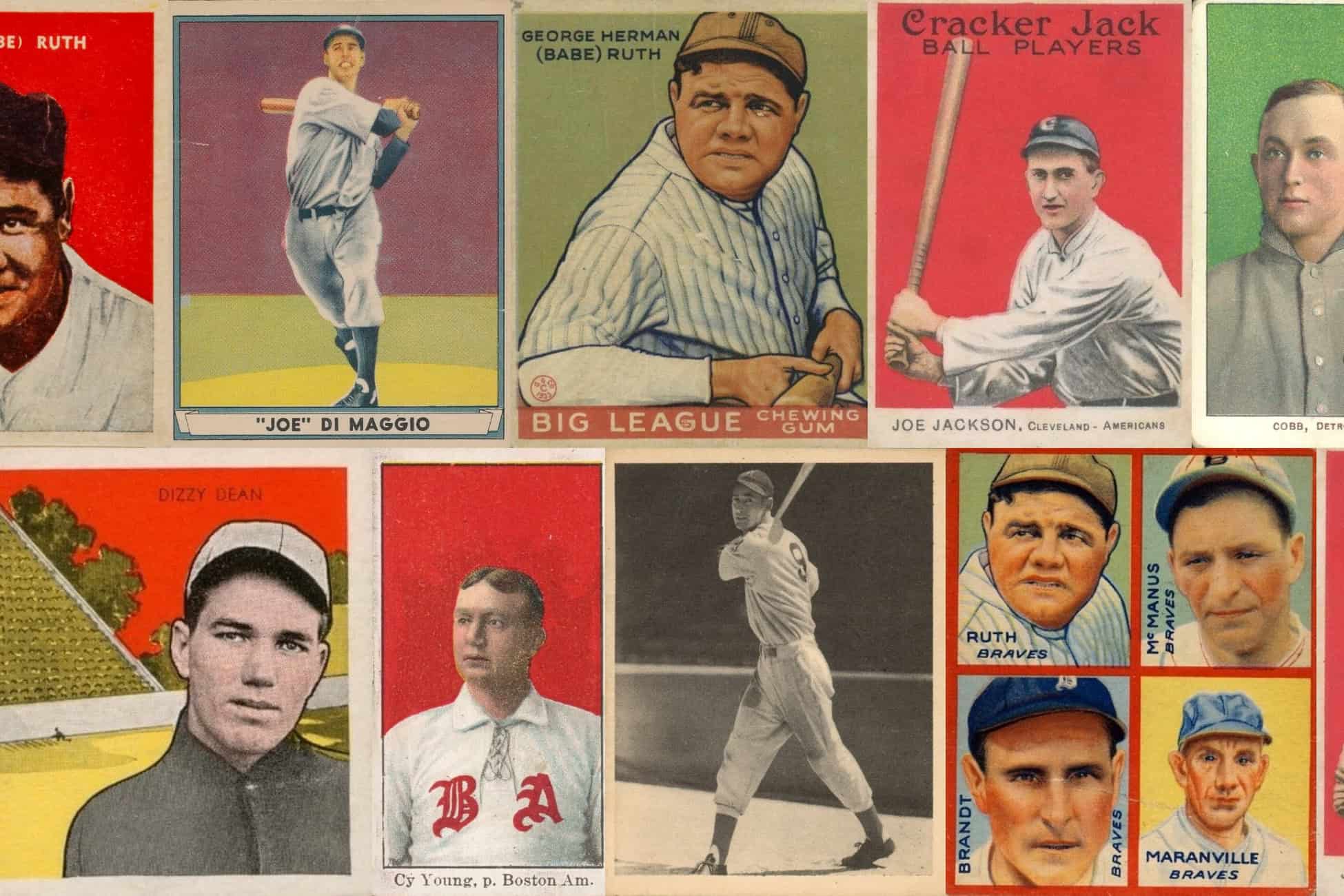The history of baseball cards is inseparable from the story of the game itself. Long before glossy finishes, chrome technology, and mass-produced inserts, the first generations of collectors were pulling cards from cigarette packs and candy boxes. These early issues, often fragile and inconsistently printed, have become treasured pre-war artifacts that capture both the culture of the times and the evolution of America’s pastime. Today, pre-war baseball cards (generally referring to cards issued before World War II) remain at the heart of serious collecting. They’re prized not only for their rarity but also for their historical significance.
Pre-war sets reflect an era when cards were both marketing tools and miniature works of art. From lithographed tobacco cards to hand-colored candy issues, they embody unique intersections of commerce, design, and sport. Collectors are drawn not just by star players but by the stories embedded in these sets: production quirks, company rivalries, and the broader social backdrop of early 20th-century America.
This article counts down the top 10 pre-war baseball card sets. We highlight the history of each issue, its most famous and valuable cards, and the features that set it apart.
10. 1941 Play Ball
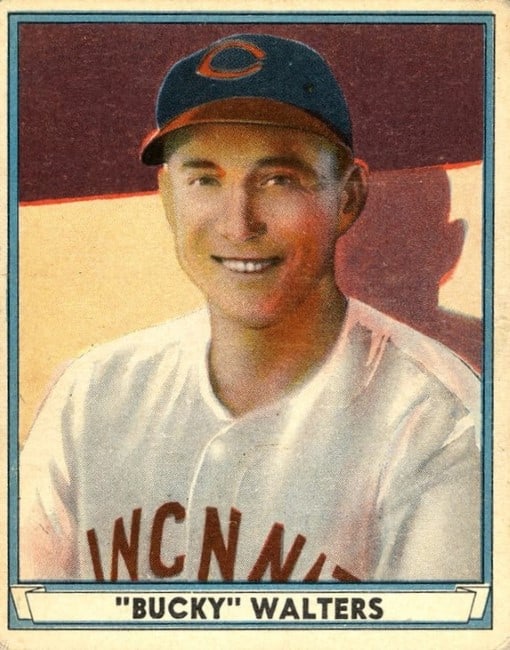
The 1941 Play Ball set, released by Gum, Inc., represents the last major baseball card issue before the onset of World War II disrupted card production. With 72 cards, the set captured the final images of pre-war baseball stars before a long hiatus in the hobby. The design features full-color lithographs, a departure from the black-and-white photography used in the earlier 1939 and 1940 Play Ball issues. This makes the set visually striking, bridging the gap between pre-war simplicity and the more polished post-war issues to come.
Notable cards include Ted Williams and Joe DiMaggio, both at the height of their powers during this era. The set is especially significant because it contains some of the last mainstream cards of players who would soon have their careers interrupted by military service.
The most valuable cards in the 1941 Play Ball set are Ted Williams, Joe DiMaggio and PeeWee Reese. High grades of Williams and DiMaggio sell between $50,000-$200,000. The set also includes some of the nicest cards of World War II-era players like Hank Greenberg.
9. 1933 Tattoo Orbit
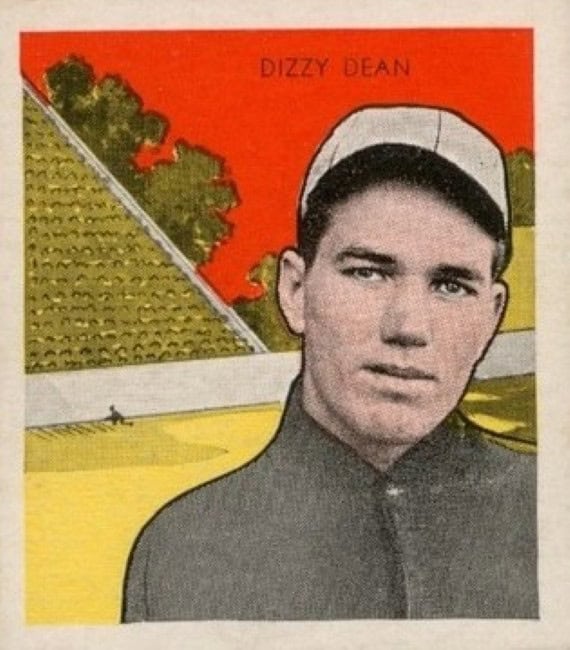
The Tattoo Orbit set, issued by the Orbit Gum Company, stands out for its scarcity and distinctive design. Measuring only 2-3/8 inches by 2-7/8 inches, the 60-card set features colorful player portraits with a playful, almost cartoon-like quality. This whimsical approach to design at a time came when most card companies leaned heavily on realism. This stylistic choice has given Tattoo Orbit a cult following among those who appreciate the artistic side of card collecting.
Key cards include Jimmie Foxx, Rogers Hornsby, and Lefty Grove. While not as widely known as other pre-war issues, Tattoo Orbit cards are beloved by advanced collectors for their rarity and artistry. Short prints like George Blaeholder sell well, along with Hall of Famers Jimmie Foxx and Dizzy Dean. Compared to other contemporaneous sets, 1933 Tattoo Orbit cards are relatively affordable. High grades of the top cards sell around $5,000-$10,000.
8. 1934-36 Diamond Stars
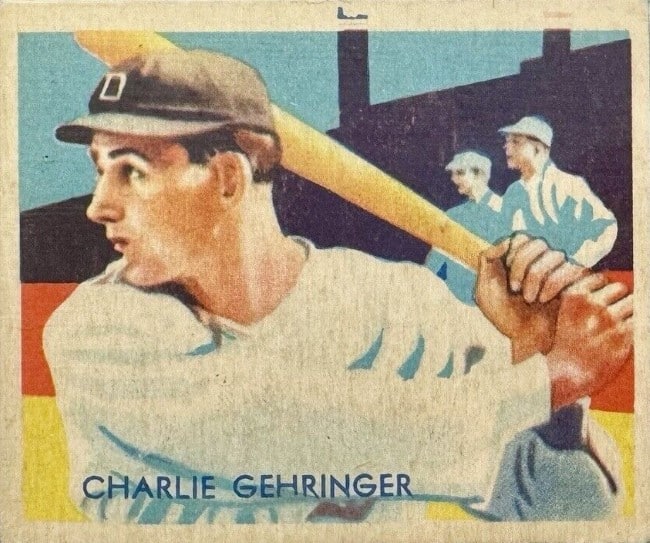
Produced by the National Chicle Company, the Diamond Stars set spans three years and includes 108 cards. Its art deco style immediately distinguishes it from other issues of the time. The bold colors and geometric backgrounds make the cards look modern at the time. The cards are smaller than modern issues, but their intricate designs make them some of the most visually engaging pre-war cards ever produced.
Standout cards include Hall of Famers like Carl Hubbell, Lefty Grove, and Mickey Cochrane. Their cards in mid-grades fetch around $1,000-$2,000. The set is also notable for its absence of Babe Ruth and Lou Gehrig, both of whom had contractual obligations with rival gum companies.
7. 1932 U.S. Caramel
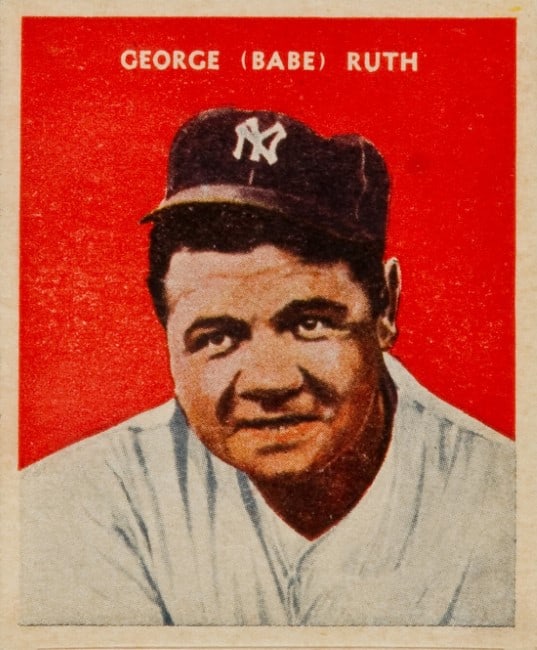
The U.S. Caramel set of 1932, consisting of 32 cards, is one of the toughest pre-war issues to complete. Distributed with candy, the set featured not only baseball players but also athletes from other sports. It was it a broader representation of American athletic heroes, beyond baseball.
Babe Ruth anchors the set, with his card standing as one of the most sought-after pre-war cards. One of the other key cards in the set belongs to golfer Bobby Jones, whose 1932 Caramel cards are behind only Ruth and Ty Cobb in terms of value. Other stars include Jimmie Foxx and Rogers Hornsby. For a set with only 32 cards, it packs in the star power.
The cards’ minimalist red backgrounds set them apart. They are instantly recognizable in the hobby. The scarcity of the issue, coupled with its clean design and strong player checklist, makes U.S. Caramel a highly respected set among advanced collectors.
6. 1935 Goudey 4-in-1
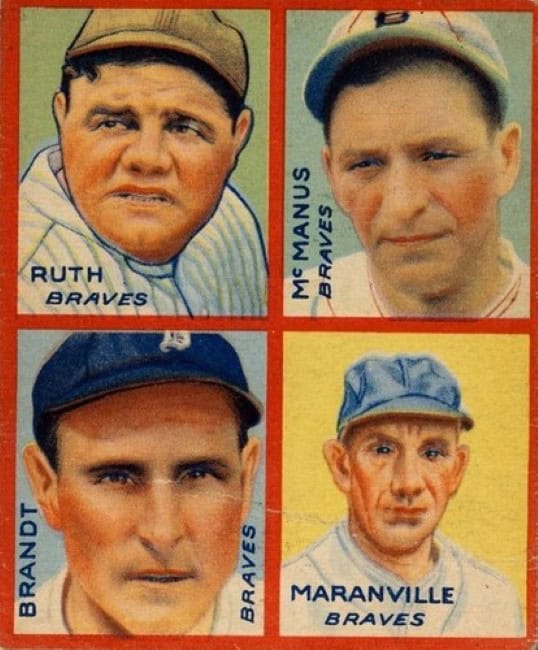
After the success of its 1933 issue, Goudey returned with an innovative 1935 set that featured four players per card. Each of the 36 cards had a puzzle piece on the back, which could be assembled into a larger image when collected. However, there were actually nine puzzles available, so there were many different combinations between the front and back art.
The design concept was unique, reflecting Goudey’s willingness to experiment with interactive elements that kept young collectors engaged. While smaller in scope than the 1933 set, the 1935 issue remains an important part of pre-war collecting.
The most famous card is the one featuring Babe Ruth. This became his final appearance in a Goudey set (as a member of the Boston Braves). Other key players include Lou Gehrig and Jimmie Foxx. Any card featuring Ruth is worth at least ten times that of any other cards in the set.
5. 1915/16 Sporting News
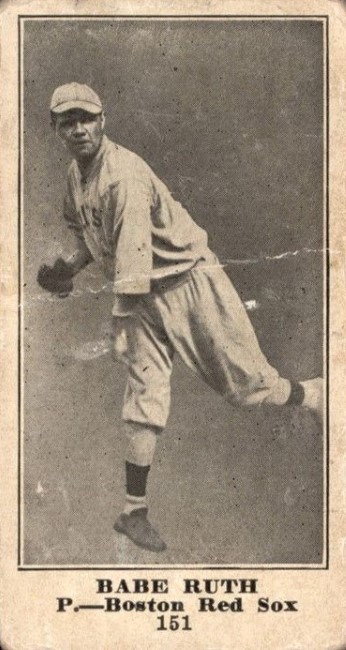
The 1915-1916 Sporting News set was part of a promotional effort by the widely read newspaper. Unlike the gum or candy-backed cards of the era, these were primarily newspaper inserts or premiums. The cards featured small, simple portraits of stars and rookies. The cards were printed in black-and-white or sepia tones, with minimal biographical information. They are a challenging set for modern collectors to complete.
The set captures a transitional period in baseball history. It highlights players whose careers bridged the “dead-ball” era and the beginnings of a more modern style of play. The cards provide a snapshot of the game during a time when it was solidifying its status as America’s pastime. However, the set is primarily known for Babe Ruth’s rookie card, which is one of the most valuable cards of all time.
4. 1933 Goudey
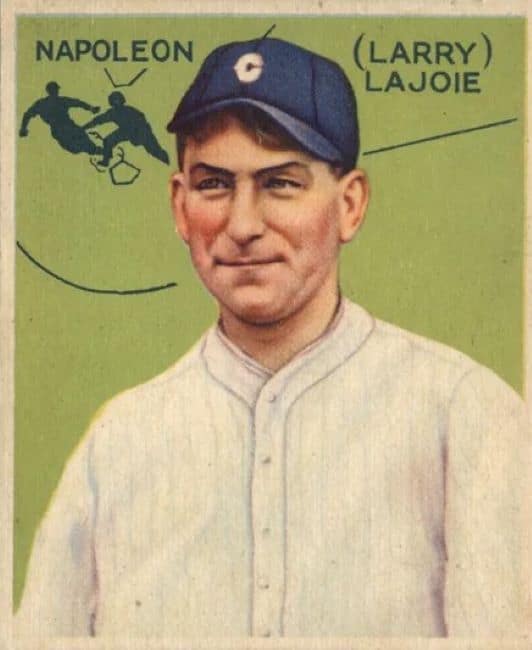
The 1933 Goudey set was a landmark in baseball card history. With 240 cards, it was the first major gum card issue and signaled the beginning of a new era for the hobby. Brightly colored player portraits, coupled with detailed back text, set this issue apart from earlier tobacco cards.
The set includes four Babe Ruth cards, Lou Gehrig, and many other Hall of Famers. It also contains the infamous Nap Lajoie card, which was not included in the original print run and had to be requested by collectors the following year. The Lajoie card remains one of the great rarities of the hobby. The #1 card, of Benny Bengough, is also valuable, not to mention difficult to find in good condition due to its placement in the set. Only Gehrig and Ruth sell for more.
3. 1914 Cracker Jack
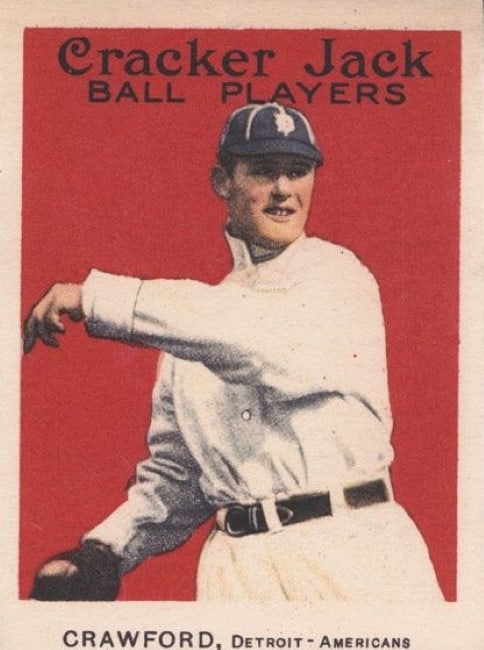
Not to be confused with its red-background counterpart (1932 Caramel), 1914 Cracker Jack is considered one of the first mainstream non-tobacco card sets and remains a cornerstone of pre-war baseball collecting.
The 1914 Cracker Jack set contains 144 cards and is tough to assemble due to the way the cards were distributed. Each card came directly inside Cracker Jack boxes. They were especially prone to caramel and oil stains, as well as creases from being handled. Also, unlike the 1915 release, which could be ordered as a complete set by mail, the 1914 issue required collectors to pull every card from a snack box. High-grade examples are scarce.
This set includes the first Cracker Jack cards of players like Joe Jackson, along with legends like Ty Cobb and Christy Mathewson. Notably missing is Babe Ruth, who was just getting started with the Red Sox and wouldn’t appear on cardboard until 1915.
2. 1939 Play Ball
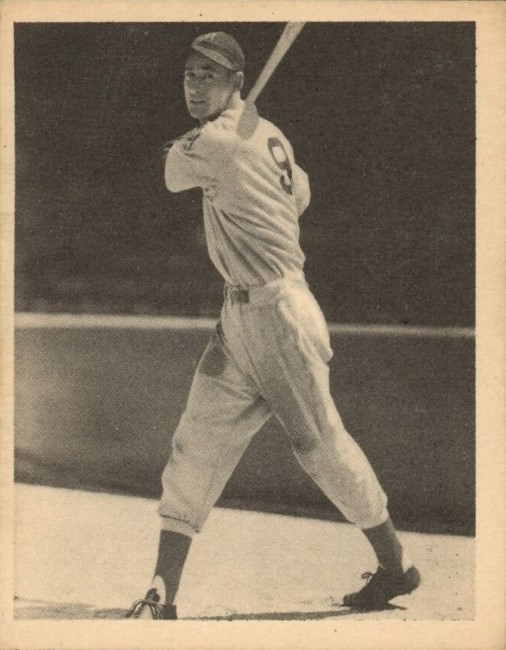
The 1939 Play Ball set marked the return of large-scale baseball card production after the Great Depression, signaling a revival of the hobby. Gum, Inc. produced a 161-card black-and-white set that reintroduced baseball cards to a new generation of collectors, offering affordable entertainment and a collectible connection to America’s pastime during a time of economic recovery.
The most famous card in the set is Ted Williams’ rookie, which has become one of the defining pre-war cards. Other notable stars featured include Joe DiMaggio, Mel Ott, and Jimmie Foxx, giving the set both star power and historical significance.
While its design is simple – mostly black-and-white portraits with minimal graphics – the 1939 Play Ball set carries enormous historical weight as the beginning of modern gum card production. It set the stage for the more colorful and widely recognized Play Ball issues of 1940 and 1941, helping to establish the template for post-war card collecting that would grow into a national pastime.
1. T206 (1909-1911)
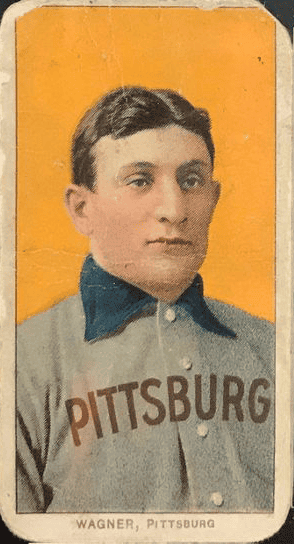
The T206 set is widely regarded as the most iconic baseball card issue of all time. Produced between 1909 and 1911 by the American Tobacco Company, the set features 524 known cards and is famous for its breadth, artistry, and enduring mystique. The set is celebrated for its beautiful lithographed portraits and wide range of tobacco brand backs, which provide endless collecting variations.
The T206 Honus Wagner card is the crown jewel, considered one of the most valuable and famous baseball card ever produced. Other rare cards in the T206 set are Eddie Plank and Larry Doyle. It’s not known why these cards were created in such limited quantities compared to the others in the set, but it makes them difficult to find. The Sherry Magee error card is another sought-after card. Players like Christy Mathewson, Ty Cobb and Walter Johnson are also centerpieces of the set, albeit easier to find.
Conclusion
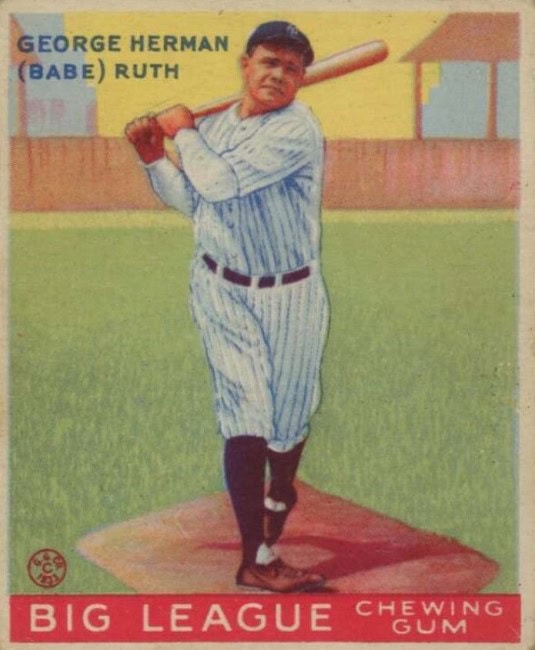
Pre-war baseball card sets offer a glimpse into both the sport’s history and the early days of the collecting hobby. These sets were not designed with investors in mind but rather as marketing tools and novelties that captured the spirit of the times. Today, they stand as some of the most cherished items in the hobby, connecting collectors to the origins of baseball culture.
The top 10 sets outlined here span from tobacco issues to candy and gum cards, each contributing uniquely to the growth of the hobby. Whether through innovative design, cultural ties, or the legendary players they depict, these sets remain central to baseball card history.
For collectors, pursuing pre-war cards means engaging directly with the roots of the game. These cards are not only financial investments but cultural artifacts, carrying forward stories of the players, the companies, and the fans who first treasured them.
